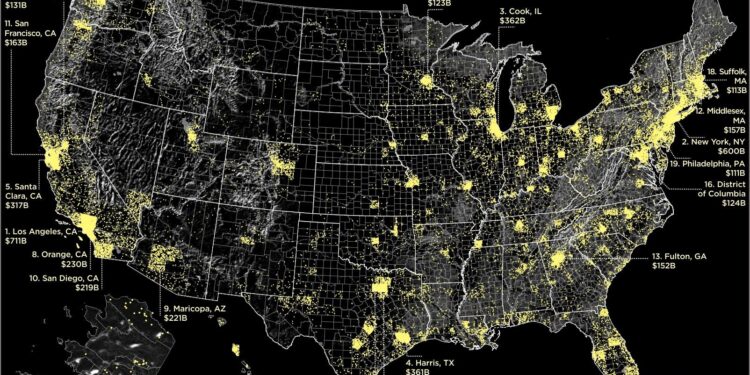Economic activity in the United States showed signs of growth in recent months, according to the Federal Reserve’s latest report. However, despite the uptick, officials expressed a cautious outlook for the near-term economic prospects, citing persistent uncertainties and potential risks. The Fed’s assessment highlights a complex economic landscape as policymakers weigh the implications for future monetary policy amid mixed signals from key indicators.
US Economic Growth Shows Resilience Amid Mixed Signals
Recent data underlines that US economic activity has maintained a steady pace, exhibiting notable resilience despite underlying concerns. Consumer spending and manufacturing output have both seen moderate upticks, with the service sector holding strong amid changing market conditions. However, business investment remains tentative, reflecting caution among companies as external risks, including global geopolitical tensions and supply chain disruptions, continue to weigh on the economic landscape.
Key factors influencing the current economic picture include:
- Robust job growth supporting household incomes
- Rising inflation pressures tempering consumer confidence
- Mixed signals from housing markets and retail sales
- Federal Reserve’s cautious stance on monetary policy adjustments
| Economic Indicator | Recent Trend | Implication |
|---|---|---|
| Consumer Spending | +1.2% QOQ | Sustains economic growth |
| Industrial Production | +0.8% QOQ | Shows sector resilience |
| Business Investment | -0.3% QOQ | Indicates cautious sentiment |
| Inflation Rate | 6.4% YOY | Pressure on real incomes |
Federal Reserve Cautions on Persistent Inflation and Global Risks
The Federal Reserve’s latest assessment reveals growing concerns over persistent inflation, despite recent signs of moderate economic growth. Officials emphasize that inflation continues to outpace the central bank’s goals, driven by supply chain disruptions, elevated energy costs, and strong consumer demand. This inflationary pressure is expected to influence monetary policy decisions in the coming months, with the Fed signaling readiness to maintain interest rate hikes to curb price increases.
Amid these domestic challenges, the Fed highlights several global risks that could further complicate the economic outlook, including:
- Geopolitical tensions disrupting international trade
- Volatility in energy markets
- Potential financial instability in emerging markets
- Ongoing pandemic-related supply chain issues
These factors contribute to an atmosphere of uncertainty, prompting the Fed to adopt a cautious stance. While US economic activity remains resilient, the combination of stubborn inflation and global vulnerabilities underscores a fragile recovery.
| Factor | Impact on Economy | Fed Response |
|---|---|---|
| Inflation | Raises consumer prices, erodes purchasing power | Interest rate hikes to slow price growth |
| Global Risks | Potential disruptions in trade and finance | Monitoring and adjusting policy as needed |
| Supply Chains | Delays and shortages increase production costs | Encouraging resilience and diversification |
Experts Recommend Strategic Monetary Measures to Sustain Recovery
Economists emphasize the urgency for the Federal Reserve to adopt targeted monetary policies aimed at reinforcing the fragile economic upswing. Key recommendations include maintaining a cautious interest rate environment while allowing flexibility to respond swiftly to shifting market signals. Experts also underscore the importance of monitoring inflation pressures closely to avoid derailing progress achieved thus far.
Suggested strategic measures include:
- Gradual tapering of asset purchases to prevent market shocks
- Enhanced communication to align expectations among investors and consumers
- Selective support for sectors lagging behind in recovery
| Measure | Impact | Timeframe |
|---|---|---|
| Interest Rate Adjustments | Stabilizes borrowing costs | Short to Mid-term |
| Targeted Asset Support | Boosts vulnerable sectors | Immediate |
| Clear Forward Guidance | Reduces uncertainty | Ongoing |
In Summary
As the U.S. economy shows signs of modest growth, the Federal Reserve’s cautious outlook underscores ongoing uncertainties ahead. While current activity suggests resilience, policymakers remain wary of inflationary pressures and global risks that could temper future expansion. Market participants and observers will be closely monitoring upcoming data and Fed communications to gauge the trajectory of the recovery in the months to come.










